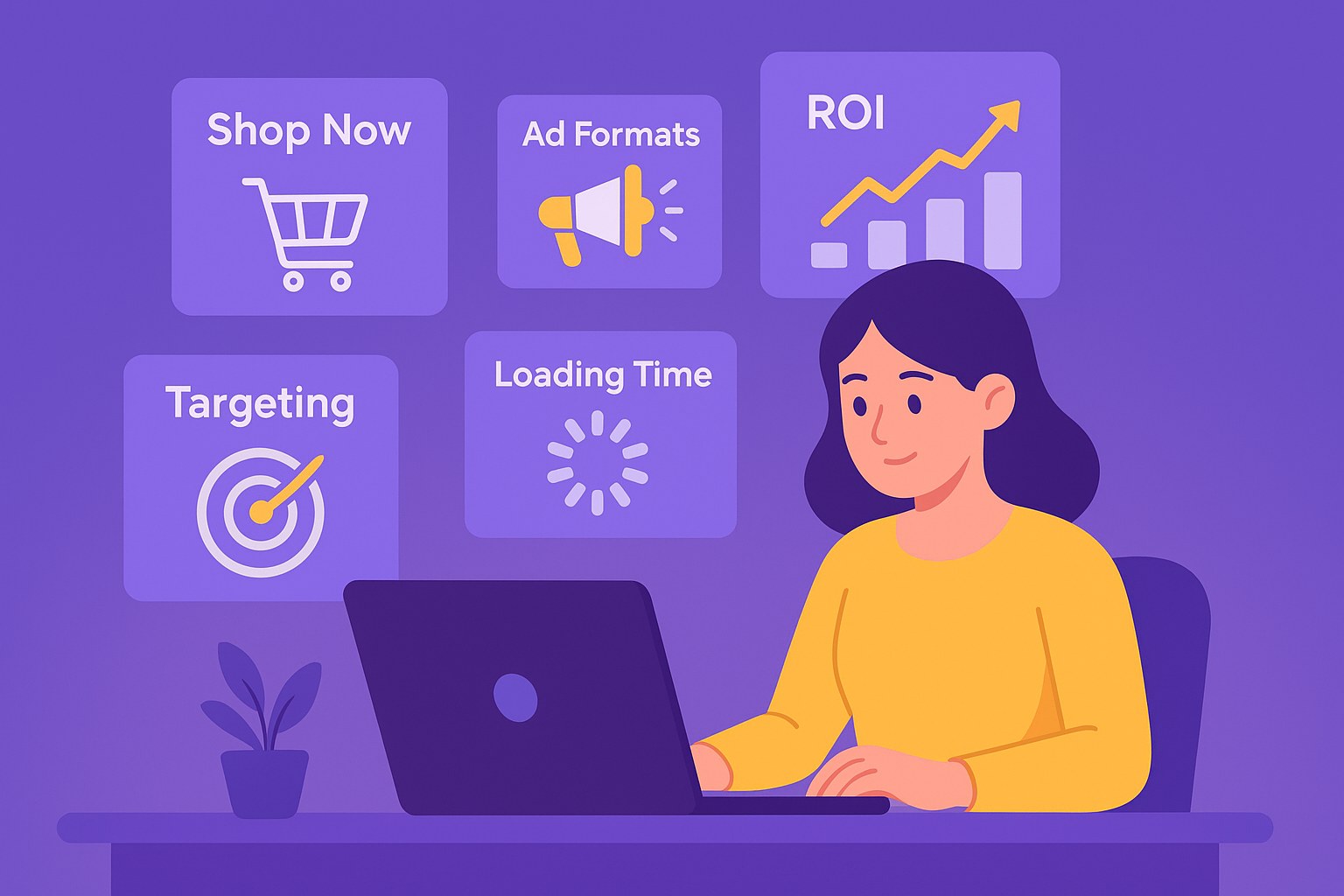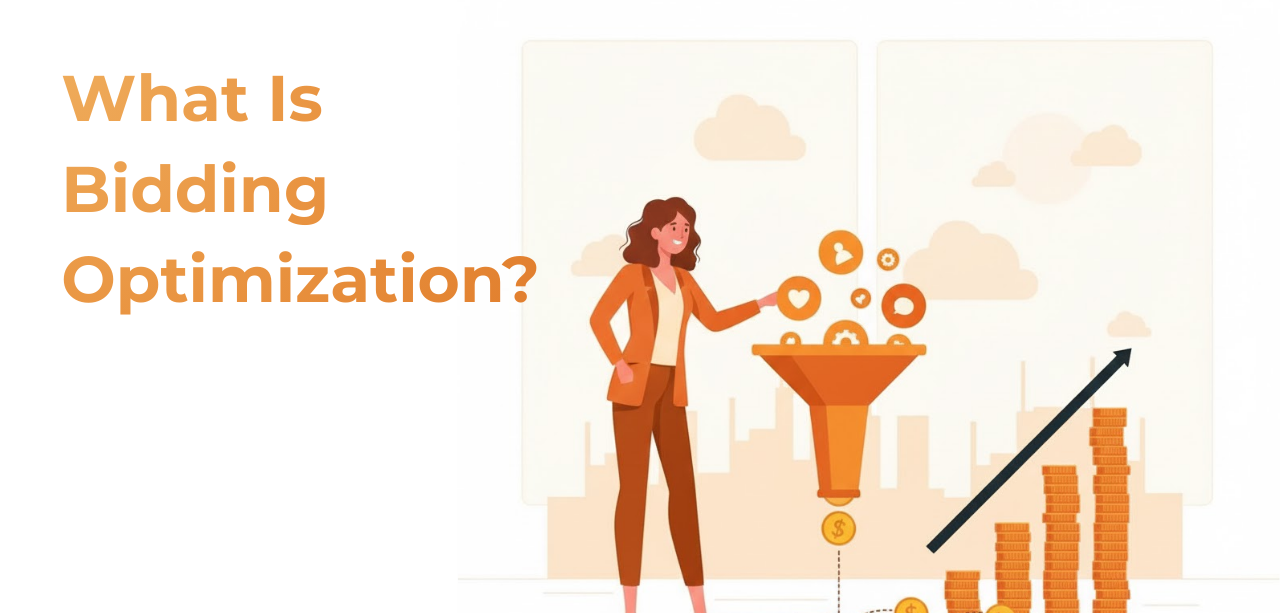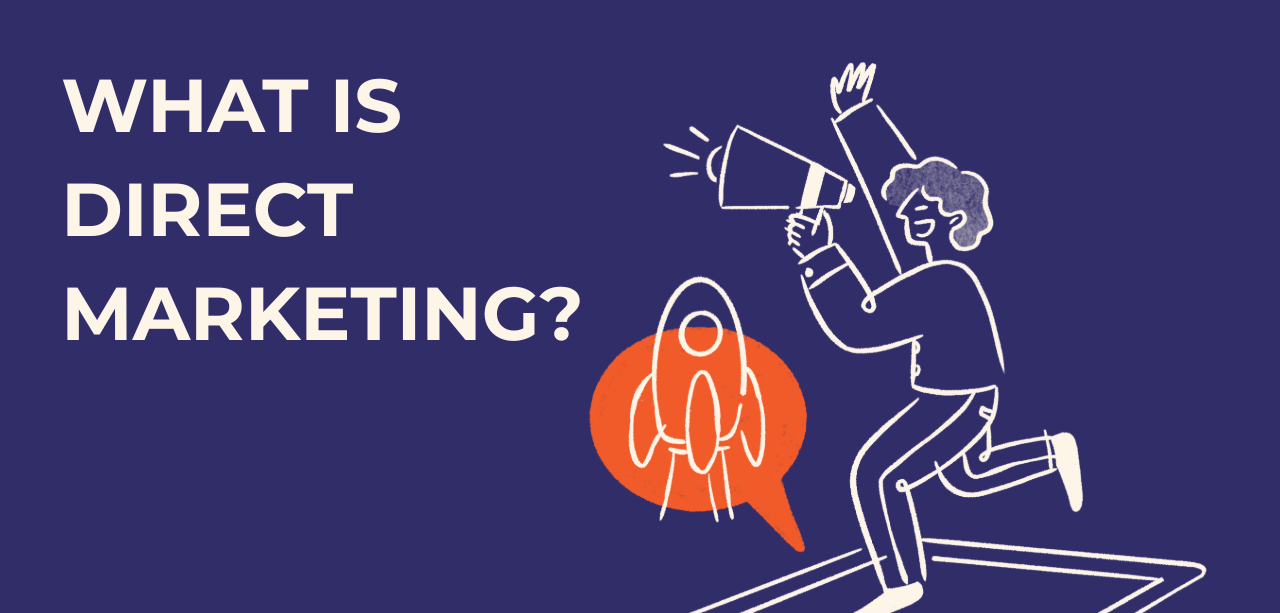How to Measure and Optimize a Campaign

In today’s competitive digital landscape, launching a marketing campaign is only the beginning. The real challenge lies in understanding what’s working, what’s not, and how to improve performance to maximize return on investment continuously. Campaign optimization isn’t a one-time activity—it’s an ongoing process that separates successful marketers from those who waste budget on underperforming tactics.
This comprehensive guide will walk you through everything you need to know about campaign measurement and marketing campaign optimization, from setting up the right metrics to implementing advanced strategies that drive real business results.
What is Campaign Optimization?
Campaign optimization is the continuous process of refining and improving marketing strategies and tactics based on data-driven insights. It involves systematically measuring key performance indicators, analyzing what’s working, and making informed adjustments to targeting, messaging, channels, and budget allocation.
The goal isn’t just to achieve your initial campaign objectives—it’s to ensure your campaigns remain relevant to your audience while maximizing efficiency and ROI over time. Effective campaign optimization creates a feedback loop where measurement informs decision-making, driving continuous improvement across all marketing activities.
Why Campaign Measurement Matters for Business Success
Without proper campaign measurement, you’re essentially flying blind. You might be spending thousands on ads that generate minimal returns while missing high-performing opportunities right under your nose.
Here’s why ad campaign effectiveness measurement is critical:
Reduces Customer Acquisition Costs: By identifying which channels and tactics deliver the best results, you can eliminate waste and focus resources on what actually converts, lowering your cost per acquisition.
Improves Conversion Rates: Measurement reveals friction points in your funnel, allowing you to optimize each stage and convert more prospects into customers.
Maximizes Budget Efficiency: In an environment where ad costs continue rising and privacy changes restrict targeting, optimization becomes your primary lever for maintaining competitive performance.
Enables Real-Time Adjustments: Rather than waiting until a campaign ends to discover what went wrong, ongoing measurement allows you to pivot quickly when performance signals demand it.
Demonstrates Marketing Value: Clear metrics and attribution models help you show stakeholders exactly how marketing investments contribute to revenue growth.
The Current Challenges in Campaign Optimization
Before diving into solutions, it’s important to understand the obstacles marketers face today:
Data Fragmentation: Marketing data is scattered across ad platforms, CRM systems, web analytics tools, and offline sources that don’t communicate natively. This makes accurate attribution and ROI measurement extremely difficult.
Complex Buying Journeys: Buying cycles are longer and involve more touchpoints across multiple channels. You need to influence entire buying committees rather than just one or two decision-makers.
Inconsistent Success Metrics: Performance marketers prioritize ROAS, executives focus on revenue impact, and product teams measure engagement—without alignment, optimization efforts become fragmented.
Attribution Challenges: Last-click attribution undervalues top-of-funnel efforts, while multi-touch models are difficult to implement without unified data.
Budget Pressures: With growth harder and budgets tighter, marketers can no longer rely on additional funding when campaigns underperform—you need visibility into what’s working now.
Poor Data Quality: UTM errors, missing tracking pixels, and inconsistent event tracking lead to inaccurate performance data and flawed optimization decisions.
Essential Metrics to Measure Marketing Campaign Success
Effective campaign measurement requires tracking both tactical metrics and strategic KPIs that align with business objectives.
Leading vs. Lagging Indicators
Understanding the difference between leading and lagging indicators is fundamental to campaign measurement:
Leading Indicators provide early signals of campaign performance and can be adjusted quickly:
- Click-through rates (CTR)
- Cost per click (CPC)
- Email open rates
- Engagement metrics
- Website traffic
- Form submissions
- Content downloads
Lagging Indicators take longer to materialize but measure ultimate business impact:
- Revenue generated
- Customer acquisition cost (CAC)
- Return on ad spend (ROAS)
- Customer lifetime value (CLV)
- Deal velocity
- Pipeline contribution
- Closed-won opportunities
Use leading indicators as early warning signals while gathering historical data on lagging indicators through multiple sales cycles. This balanced approach gives you both immediate feedback and long-term performance validation.
Channel-Specific KPIs
Different channels require different measurement approaches. Here’s how to align KPIs with each marketing channel:
Display Advertising: Focus on impressions, viewability, CTR, and engagement rates to measure awareness and interest.
Search Marketing: Track CPC, conversion rate, quality score, and cost per acquisition to optimize search performance.
Email Marketing: Monitor open rates, click rates, unsubscribe rates, and email-driven conversions.
Social Media: Measure engagement rate, share of voice, follower growth, and social-driven conversions.
Content Marketing: Track time on page, scroll depth, content engagement, and influenced pipeline.
Paid Social: Analyze CPM, relevance score, video completion rate, and cost per conversion.
Set individual channel KPIs that roll up into overall campaign objectives. This approach helps you understand which channels perform best and how they collectively impact the pipeline and revenue.
Building a Comprehensive Measurement Framework
A robust measurement framework is the foundation of effective campaign optimization. Here’s how to build one:
Step 1: Define Clear Campaign Objectives
Start by outlining specific, measurable goals aligned with business objectives. Instead of vague aims like “increase awareness,” set concrete targets such as “generate 500 qualified leads at a $75 CAC” or “achieve 4:1 ROAS on paid search campaigns.”
Step 2: Establish Tracking Infrastructure
Implement comprehensive tracking across all marketing channels:
- Install proper tracking pixels and conversion tags
- Set up UTM parameters consistently
- Configure goal tracking in analytics platforms
- Integrate marketing tools with your CRM
- Ensure mobile and cross-device tracking
Step 3: Choose Attribution Models
Attribution determines how you assign credit for conversions across touchpoints. Common models include:
Last-Click Attribution: Simple but undervalues awareness and consideration touchpoints
First-Click Attribution: Credits initial discovery but ignores nurturing efforts
Linear Attribution: Distributes credit equally across all touchpoints
Time-Decay Attribution: Gives more credit to recent interactions
Data-Driven Attribution: Uses machine learning to assign credit based on actual impact
Start with simpler models and evolve toward data-driven attribution as you collect more historical performance data.
Step 4: Create Unified Dashboards
Consolidate data from all channels into centralized dashboards that provide real-time visibility into campaign performance. This eliminates manual reporting and accelerates insight generation.
Proven Strategies for Marketing Campaign Optimization
With measurement infrastructure in place, implement these strategies to continuously improve campaign performance:
1. Audience Segmentation and Targeting
Effective segmentation is foundational to campaign optimization. Rather than treating your audience as a monolith, divide them into distinct groups based on behavior patterns, demographics, purchase history, and engagement metrics.
Quarterly: Conduct deep analysis of customer data to refine segment definitions and identify new opportunities.
Monthly: Monitor segment migration patterns to identify upselling opportunities and adjust retention strategies.
Bi-weekly: Test segment responsiveness through A/B experiments and track segment-specific CAC and lifetime value.
Weekly: Monitor segment performance metrics and adjust channel budget allocation based on segment ROI.
Daily: Track campaign spend against performance targets and adjust targeting when segments deviate 15% from goals.
Prioritize buyer personas who will advocate for your solution. When you deliver enough relevant content to influential decision-makers, they’ll convince the rest of the buying committee for you.
2. Budget Allocation and Performance Scaling
Strategic budget distribution maximizes returns while minimizing wasted spend:
Monthly: Review ROAS and CPA trends across channels. Scale budgets 15-20% for channels exceeding targets for two consecutive weeks. Reduce or pause spending on channels performing 25% below target for three consecutive weeks.
Weekly: Review platform-specific metrics and adjust campaign budgets based on real-time data. Scale successful campaigns gradually (10-15% weekly) while maintaining efficiency metrics.
Daily: Monitor key performance indicators and implement automated rules for budget pacing and bid adjustments when performance deviates beyond 15% from targets.
Real-time: For high-spend campaigns, implement automated alert systems that trigger when CPA increases beyond 20% baseline, engagement drops exceed 25% versus weekly averages, or budget pacing deviations surpass 10%.
3. Creative and Messaging Optimization
Your creative assets and messaging directly impact engagement and conversion rates. Optimize them systematically:
Quarterly: Conduct comprehensive message audits evaluating performance across all channels. Analyze which headlines, visuals, and CTAs drive the best results.
Monthly: Develop new creative concepts for top-performing channels and test radical variations against control versions.
Bi-weekly: Launch A/B tests for ad creatives and email campaigns with multiple variations. Monitor for creative fatigue and refresh assets when engagement drops 15% below baseline.
Every 10-14 days: Test new ad creatives against controls, splitting one variable at a time (headlines, images, CTAs, or value propositions). Require a minimum of 100 conversions per variant before declaring winners.
Weekly: Analyze creative performance by placement and audience segment. Update ad copy based on performance data and competitive analysis.
4. Conversion Rate Optimization (CRO)
CRO focuses on improving the percentage of visitors who complete desired actions:
- Analyze user behavior through heatmaps and session recordings
- Identify friction points in conversion funnels
- Test landing page elements (headlines, forms, CTAs, layouts)
- Optimize page load speed and mobile experience
- Simplify form fields and checkout processes
- Add trust signals like testimonials and security badges
Even small conversion rate improvements compound significantly across high-traffic campaigns.
5. Leverage Marketing Automation and AI
Automation accelerates optimization by handling repetitive tasks and enabling real-time adjustments:
Campaign Management Automation: Use platform-specific tools like Google Ads automated bidding strategies (Target ROAS, Maximize Conversions) that leverage machine learning to adjust bids based on performance patterns.
Audience Segmentation Automation: AI-powered customer data platforms analyze behavioral patterns and segment audiences based on real-time interactions, enabling dynamic retargeting and personalized messaging.
Performance Analytics Automation: Automate data integration from 500+ sources, eliminating manual reporting and accelerating insight generation. This allows you to identify what’s working and reallocate budgets faster.
Establishing Sales and Marketing Alignment
Campaign optimization doesn’t happen in a vacuum—it requires tight alignment between sales and marketing teams.
Implement Feedback Loops
Schedule regular meetings between teams to review metrics, share feedback, and address challenges. Create shared goals and KPIs focusing on outcomes like sales cycle progression, customer growth, and contract value.
Encourage Open Communication
Sales can offer insights into effective messaging with prospects, while marketing shares data on engagement trends. This exchange helps refine strategies and improve overall performance.
Create Unified Scorecards
Develop dashboards that both teams use to track progress toward shared objectives. This ensures alignment on target accounts and helps optimize the buying journey for revenue growth.
Measure Lead Quality Throughout Nurture
Track the quality of leads during nurture stages and identify disqualification trends. If you’re receiving out-of-market leads or experiencing large drop-offs, analyze your targeting, channel, and content strategies and optimize accordingly.
Campaign Optimization Best Practices
Review and Adjust KPIs Regularly
Don’t set KPIs once and forget them. Implement a review cadence:
Weekly: Monitor dashboards to spot emerging trends. Monthly: Analyze performance patterns and test new tactics. Quarterly: Conduct comprehensive reviews and adjust strategies. Yearly: Evaluate long-term effectiveness and set new targets
Connect Campaigns with CRM and Marketing Automation
A holistic view of marketing performance makes tracking and measurement more accurate and efficient. Connect your CRM, marketing automation platform, and campaign tools to:
- Track account-level progression through the buyer’s journey
- Validate campaign influence on opportunity volume and deal value
- Identify trends quickly and optimize each channel with targeted content
- Use predictive analytics to identify potential opportunities within target accounts
Test One Variable at a Time
When running A/B tests, isolate single elements to clearly understand what drives results. Testing multiple variables simultaneously makes it impossible to attribute improvement to specific changes.
Maintain Consistent Tracking Standards
Establish standardized UTM parameters, naming conventions, and taxonomies across all campaigns. This ensures data quality and enables accurate cross-channel comparison.
Monitor Competitor Activity
Keep an eye on competitor campaigns, messaging, and positioning. Use these insights to differentiate your approach and identify market opportunities.
How to Show ROI by Channel
Demonstrating channel-specific ROI is crucial for budget decisions and scaling successful campaigns. Build this framework:
Build Comprehensive Measurement Infrastructure
Integrate cross-channel metrics from paid ads, organic traffic, CRM systems, and offline sources into a single source of truth. This consolidation enables accurate attribution and performance comparison.
Apply Advanced Attribution Models
Move beyond last-click attribution to multi-touch models that reflect the entire customer journey. Experiment with linear, time-decay, or data-driven attribution to assess channel contributions at every funnel stage.
Analyze Contribution and Incrementality
Evaluate channels beyond ROAS by considering customer lifetime value and incremental lift. Compare performance through cross-channel dashboards to identify high-impact sources and uncover diminishing returns from underperforming platforms.
Calculate True Channel ROI
For each channel, calculate:
- Total revenue generated
- Minus: Direct costs (ad spend, agency fees, tool costs)
- Minus: Indirect costs (team time, creative production)
- Divided by: Total investment
- Equals: ROI percentage
Track this across different timeframes to understand both immediate and long-term channel value.
The Campaign Optimization Process: Step-by-Step
Here’s a practical process for ongoing campaign optimization:
Step 1: Define Objectives and KPIs
Clearly outline campaign goals and the specific metrics you’ll use to measure success. Ensure these align with broader business objectives.
Step 2: Establish Attribution and Tracking
Implement comprehensive tracking across all touchpoints. Work with analytics tools or measurement partners to get a clear view of campaign performance.
Step 3: Launch Campaigns
Execute your campaigns across diversified channels targeting relevant audiences. Ensure proper tracking is in place from day one.
Step 4: Monitor Performance
Use campaign analytics tools to regularly track metrics and KPIs. Look for trends, anomalies, and potential issues early.
Step 5: Conduct A/B Testing
Implement tests comparing different variations of creatives, copy, audiences, and channels. Let tests run long enough to achieve statistical significance.
Step 6: Analyze and Optimize
Review test results and performance data to identify areas for improvement. Make data-driven adjustments to targeting, creative, messaging, or budget allocation.
Step 7: Iterate and Scale
Continue the cycle of testing, analyzing, and optimizing. Scale what works and cut what doesn’t. As you gather more data, your optimization decisions become increasingly refined.
Common Campaign Optimization Mistakes to Avoid
Even experienced marketers fall into these traps:
Optimizing Too Early: Making changes before collecting sufficient data leads to false conclusions. Allow tests to reach statistical significance.
Ignoring Statistical Significance: Small sample sizes produce unreliable results. Ensure your tests have adequate traffic and conversions before making decisions.
Focusing on Vanity Metrics: Impressions and clicks matter less than conversions, CAC, and revenue. Always connect metrics to business outcomes.
Optimizing Channels in Isolation: Evaluating channels independently misses cross-channel effects and can lead to inefficient budget allocation.
Neglecting Mobile Experience: With mobile traffic dominating most industries, poor mobile optimization kills conversion rates.
Overlooking Page Speed: Slow-loading pages dramatically increase bounce rates and decrease conversions, undermining all other optimization efforts.
Failing to Document Changes: Track what you’ve tested, when, and the results. Without documentation, you’ll repeat failed experiments and forget what worked.
Tools for Campaign Measurement and Optimization
The right tools streamline measurement and enable faster optimization:
Analytics Platforms: Google Analytics, Adobe Analytics for website and conversion tracking
Attribution Tools: Tools that connect multi-touch attribution across channels
A/B Testing Platforms: Optimizely, VWO for landing page and website testing
Marketing Automation: HubSpot, Marketo for email and nurture campaign automation
Data Integration Platforms: Solutions that aggregate data from 500+ sources into unified dashboards
Bid Management Tools: Platform-specific automation, like Google Ads automated bidding
Customer Data Platforms: Tools that centralize customer data and enable advanced segmentation
Reporting Dashboards: Tableau, Looker, or specialized marketing dashboards for visualization
Choose tools that integrate well with your existing tech stack and provide the specific capabilities your optimization strategy requires.
The Future of Campaign Optimization
Campaign optimization continues evolving with new technologies and capabilities:
AI-Driven Optimization: Machine learning algorithms automatically optimize bids, targeting, and creative in real-time based on performance patterns.
Predictive Analytics: Using historical data to forecast trends, identify opportunities, and optimize future campaigns before they launch.
Privacy-First Measurement: As third-party cookies disappear, first-party data and privacy-compliant tracking methods become essential.
Cross-Device Attribution: Better tracking of customer journeys across multiple devices for more accurate attribution.
Automated Experimentation: Platforms that continuously test variations and automatically implement winning combinations.
Real-Time Personalization: Delivering dynamically personalized content based on real-time behavioral signals and intent data.
Staying ahead means embracing these innovations while maintaining focus on fundamental optimization principles.
Key Takeaways
Campaign optimization is not optional in today’s competitive marketing environment—it’s the difference between wasted budget and profitable growth. Here’s what to remember:
- Measurement is foundational: You cannot optimize what you don’t measure. Implement a comprehensive tracking infrastructure before launching campaigns.
- Balance leading and lagging indicators: Use leading indicators for early signals while tracking lagging indicators for ultimate business impact validation.
- Optimize continuously, not periodically: Set up regular review cadences from daily monitoring to quarterly strategy adjustments.
- Align sales and marketing: Create feedback loops, shared KPIs, and unified scorecards to ensure both teams work toward common goals.
- Test systematically: Run controlled A/B tests isolating single variables, and require statistical significance before implementing changes.
- Focus on business outcomes: Connect all metrics to revenue impact, not just vanity metrics like impressions and clicks.
- Leverage automation strategically: Use AI and automation for repetitive tasks and real-time adjustments while maintaining strategic human oversight.
- Think cross-channel: Evaluate campaign performance holistically rather than optimizing channels in isolation.
The most successful marketers treat campaign optimization as an ongoing discipline, not a one-time project. They build robust measurement frameworks, test systematically, and use data to make informed decisions that compound over time. By implementing the strategies and best practices in this guide, you’ll be well-equipped to measure marketing campaign performance accurately and optimize for maximum ROI.
Start with your highest-impact channels, focus on quick wins to demonstrate value, and expand optimization efforts systematically as you gather performance data. With consistent measurement and optimization, your campaigns will continuously improve, delivering better results while reducing waste—exactly what today’s budget-conscious environment demands.
READ ALSO:- Audio Advertising and Podcasts: Simple Guide for 2025
Frequently Asked Questions
What is marketing campaign optimization?
Marketing campaign optimization is the continuous process of refining marketing strategies using data-driven insights to improve performance and maximize ROI. It involves analyzing metrics, testing variations, and adjusting targeting, messaging, and budget allocation to achieve better results over time.
How do you measure the effectiveness of a marketing campaign?
Measure campaign effectiveness by tracking both leading indicators (CTR, engagement, conversions) and lagging indicators (revenue, CAC, ROAS, customer lifetime value). Use analytics tools to monitor channel-specific KPIs, implement proper attribution models, and align metrics with business objectives to understand true campaign impact.
What are the key metrics for campaign optimization?
Essential metrics include click-through rate (CTR), conversion rate, cost per acquisition (CAC), return on ad spend (ROAS), customer lifetime value (CLV), engagement rate, and revenue generated. Track channel-specific KPIs that roll up into overall campaign goals for comprehensive performance visibility.
How often should you optimize marketing campaigns?
Optimize campaigns on multiple timeframes: monitor performance daily, adjust tactics weekly, conduct deeper analysis monthly, and perform strategic reviews quarterly. High-spend campaigns may require hourly monitoring, while creative testing typically runs every 10-14 days for statistical significance.
What is the difference between campaign measurement and optimization?
Campaign measurement is the process of tracking and analyzing performance metrics and KPIs. Campaign optimization is taking action based on those insights—adjusting targeting, creative, budget, or strategy to improve results. Measurement provides the data; optimization drives the improvement.
How can I optimize campaigns with a limited budget?
Focus on high-performing channels, use marketing automation to reduce manual effort, prioritize A/B testing for quick wins, leverage organic tactics alongside paid campaigns, and implement proper tracking to avoid wasted spend. Reallocate budget from underperforming areas to proven tactics based on data analysis.
Related Articles
Continue your learning journey with these related insights

What is Ad Inventory?
The digital advertising landscape operates on a fundamental commodity: space. While physical stores stock products on shelves, digital publishers stock something equally valuable—advertising inventory. Understanding this concept is essential for anyone involved in online marketing, whether you’re buying ad space or selling it. What is Ad Inventory? Ad inventory represents the total amount of advertising […]

What Is Bidding Optimization?
In the fast-paced world of digital advertising, every dollar counts. Whether you’re running search ads, display campaigns, or e-commerce promotions, the difference between profitability and wasted spend often comes down to one critical factor: bidding optimization. But what exactly is bidding optimization, and how can it transform your advertising performance? This comprehensive guide breaks down […]

What Is Direct Marketing?
Have you ever received a personalized email offering a discount on exactly what you were browsing yesterday? Or gotten a text message about a flash sale from your favorite store? That’s direct marketing in action—and it’s one of the most powerful tools businesses use to connect with customers today. Unlike traditional advertising that casts a […]
Ready to Transform Your Advertising Strategy?
Join thousands of advertisers who trust Performoo to optimize their campaigns and maximize revenue.